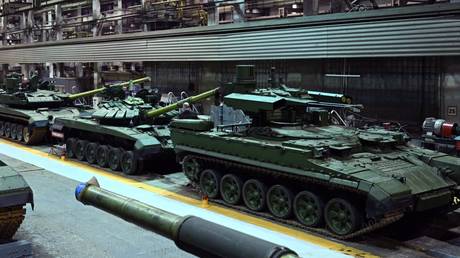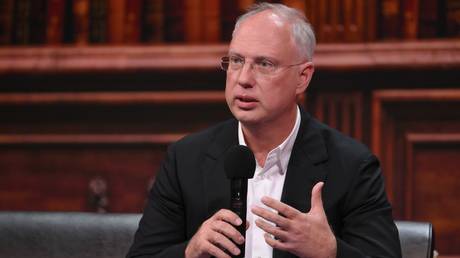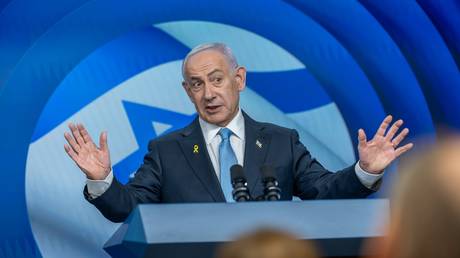
The European members of NATO had no plan for military-industrial mobilization prior to the conflict, the study has found
Russia has been able to significantly ramp up its production of military hardware during the Ukraine conflict, while Western Europe’s defense-industrial base turned out to be “manifestly inadequate” in meeting the challenge, a leading British think tank has acknowledged.
While NATO’s European members, which have been supplying Kiev with weapons and ammunition during the fighting with Moscow, have made major investments into their military industries, these have largely proven to be “ineffective,” the Royal United Services Institute (RUSI) acknowledged in a report which was published on Thursday.
“Russia had a well-developed plan for military-industrial mobilization which it implemented early in the war. Europe, meanwhile, lacked both a plan and the data with which to build one,” the report read.
Another of Moscow’s advantages was its defense industry’s “highly centralized level of coordination,” while the UK and EU nations “lacked control, and could only incentivize industry,” it said. The governments and arms manufacturers in Western Europe also “lacked an understanding of their own supply chains, leading to massive internal competition and uneven expansion,” the study added.
According to the think tank, Russia has not only boosted spending on its armed forces, but also “rerouted money from other budgets to expand military-industrial recapitalization and has advanced credit to defense companies to enable rapid growth.”
The European members of NATO could not mobilize investment on a comparable level, while “the fragmentation of the European defense market has meant that money is spent very inefficiently,” it said.
Regulations in Western Europe were also “often self-defeating in raising the cost and slowing the production of equipment,” the report noted.
The authors of the paper suggested that “significant efforts,” including the better coordination of spending and regulatory reforms, are needed to be made by Britain and the EU for them to be able “to deter Russia with reduced US support.”
Russian President Vladimir Putin said in February that the country’s defense industry has “achieved a real breakthrough” and an actual “labor feat” during the Ukraine conflict. It is currently working “at a colossal rate, in three shifts, so to speak, non-stop,” mastering the production of state-of-the-art equipment and constantly increasing output volumes, Putin stressed.
READ MORE: Trump’s tariffs threaten US arms production – Politico
According to Russia’s Defense Minister Andrey Belousov, the level of defense spending in the country reached 6.3% of GDP and 32.5% of the state’s annual budget in 2024.



